Finance
Global Commodity Prices Surge: Implications for Investors
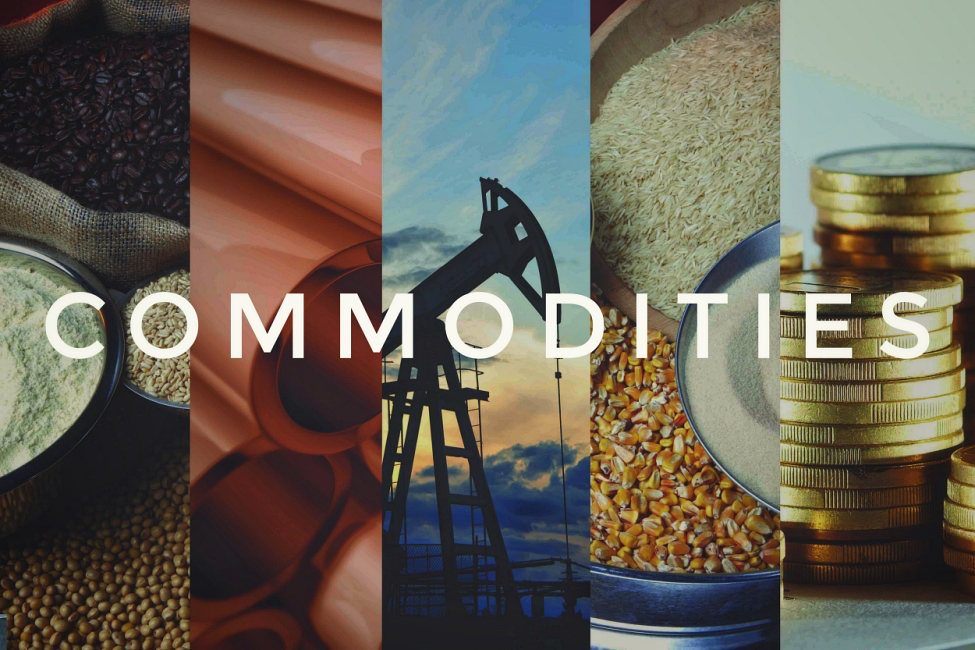
Introduction to the Commodity Price Surge
In recent months, global commodity prices have experienced a significant surge, drawing the attention of investors and market analysts alike. This upward trend can be attributed to a confluence of factors that have shaped supply and demand dynamics across various sectors. A notable increase has been observed in essential commodities such as oil, metals, and agricultural products. These fluctuations are not only reshaping the economic landscape but also pose important considerations for investment strategies.
One major factor contributing to the rise in commodity prices has been the ongoing disruptions in supply chains, primarily triggered by geopolitical tensions and the lingering effects of the COVID-19 pandemic. As countries grapple with issues such as labor shortages and logistical challenges, the availability of commodities has dwindled, thereby driving up prices. For instance, crude oil prices soared to multi-year highs amid concerns over production cuts from major oil-producing nations.
Additionally, increased demand from emerging economies has placed further stress on commodity markets. With nations restarting their economies post-pandemic, the accelerated demand for energy, metals, and food products has further exacerbated the situation. Coupled with expanding efforts toward renewable energy, this increase in consumption has often outpaced production capabilities, heightening the competition for these valuable resources.
Furthermore, inflationary pressures have added another layer of complexity to the evolving landscape of commodity pricing. As countries implement expansive monetary policies and government spending initiatives, investors are increasingly turning to commodities as a hedge against inflation, thereby fueling an already buoyant market.
In conclusion, the current surge in global commodity prices is driven by a blend of supply disruptions, heightened demand, and inflationary concerns. Understanding these trends is essential for investors looking to navigate this fluctuating market and making informed decisions regarding their portfolios.
Key Drivers Behind the Price Increases
The recent surge in global commodity prices can be attributed to a multitude of factors that have collectively influenced market dynamics. One prominent driver is geopolitical tensions, which often create uncertainty in commodity supply chains. For instance, conflicts in key producing regions can disrupt the extraction and transportation of essential commodities such as oil, gas, and agricultural products. This disruption inevitably leads to decreased supply in the market, pushing prices higher as demand remains constant. Investors must remain vigilant to geopolitical developments, as they can significantly sway commodity market valuations.
Moreover, the pandemic-induced supply chain disruptions have exacerbated the situation. Lockdowns and restrictions have hindered production capacities and logistics, leading to bottlenecks in commodity availability. A pronounced example is the impact on lumber and metals, where delays in shipping and labor shortages have resulted in a dramatic price increase. As economies recover, the demand for commodities has surged, further straining the already disrupted supply chains. Therefore, understanding the interplay between supply chain challenges and rising demand is crucial for investors looking to navigate the commodity market.
Furthermore, changes in monetary policy and inflation rates significantly influence commodity pricing. Central banks have adopted accommodative monetary policies, including low interest rates and quantitative easing, to stimulate economic recovery. These measures can lead to increased investment in commodities as a hedge against inflation. As inflation rises, the real value of currency diminishes, prompting investors to shift their focus towards tangible assets like gold or agricultural goods. Thus, commodities often serve as a safeguard against inflationary pressures, making them attractive investment options in uncertain economic climates.
Sector-Specific Impacts: Which Commodities Are Rising?
Recent trends in global commodity markets have indicated substantial price surges across various sectors, notably in energy, metals, and agricultural products. Understanding these dynamics is crucial for investors looking to navigate the complexities of rising commodity prices.
In the energy sector, crude oil has seen a significant uptick, influenced by geopolitical tensions and supply chain disruptions. OPEC’s production decisions, combined with recovery demand post-pandemic, have fueled higher prices. This surge impacts not only energy companies but also sectors reliant on fuel, such as transportation and manufacturing. Increased oil prices can lead to higher operational costs, potentially cascading into higher consumer prices, thereby affecting overall economic stability.
Turning to metals, copper has experienced remarkable gains, driven by heightened demand in construction and technological applications, particularly in the renewable energy sector. As nations strive to transition towards sustainable energy solutions, the demand for copper to manufacture electric vehicles and solar panels continues to increase. This trend affects industries ranging from construction to electronics, highlighting a critical shift toward green infrastructure.
In the agricultural domain, commodities like wheat and corn have faced upward price pressures due to adverse weather conditions and supply chain challenges. These increases can have a direct impact on food prices globally, affecting consumers and food production companies alike. Fluctuations in agricultural commodities are not just economic indicators, but they also signify broader patterns of climate change, requiring stakeholders to remain vigilant about sourcing and supply chains.
Understanding these sector-specific impacts allows investors and industry players to make informed decisions. The rise in commodity prices signals a multifaceted story of economic recovery, geopolitical factors, and evolving market demands, which ultimately shapes investment strategies across the board.
Historical Context: Comparisons to Past Market Trends
The current surge in global commodity prices echoes previous market trends observed throughout history, notably during periods of economic upheaval and recovery. Commodity markets have exhibited cyclical patterns, characterized by fluctuations in demand and supply driven by various factors such as geopolitical tensions, technological advancements, and shifts in consumer behavior. To better understand today’s price increases, we must explore comparable historical instances, particularly the commodity booms of the early 2000s and the financial crisis of 2008.
During the early 2000s, a rapid industrial expansion in emerging markets—most notably in China—significantly increased global demand for commodities, including oil, metals, and agricultural products. Prices soared, driven by burgeoning consumption patterns. This period offers crucial insights into the current scenario, highlighting how enhanced demand can quickly escalate prices. Conversely, the subsequent downturn in commodity prices following the 2008 financial crisis serves as an important reminder of the potential for swift reversals in market trends. Investors experienced significant losses as demand plummeted and supply chains adapted to global economic contractions.
Moreover, the boom-and-bust cycles in commodities often reveal the inherent volatility of these markets. Lessons drawn from past events emphasize the importance of strategic portfolio management for investors. For instance, diversifying investment across different sectors can mitigate risks associated with commodity price fluctuations. Additionally, understanding macroeconomic indicators—such as inflation rates, interest rates, and currency valuations—can enhance investors’ ability to navigate similar surges in the future. As commodity prices surge acknowledges the cyclical nature of economic factors impacting these markets, investors are encouraged to leverage historical insights for informed decision-making.
Investment Opportunities Amid Rising Prices
The recent surge in commodity prices has created a distinctive landscape for investors looking to navigate this dynamic market. As global demand escalates and supply chain disruptions persist, several investment opportunities have emerged that can capitalize on the prevailing conditions. One of the most accessible avenues for investors is through exchange-traded funds (ETFs) that focus on commodities. These funds typically offer diversified exposure to a basket of commodities, allowing investors to spread their risk while participating in the upward price movement. For instance, ETFs that track precious metals like gold and silver have become particularly popular, as these commodities often serve as safe havens during periods of economic uncertainty.
Additionally, stocks of commodity producers are another viable option for investors. Companies engaged in the extraction and production of oil, natural gas, and gold have seen their stock prices respond positively to rising commodity prices. Investing in these stocks can provide leveraged exposure, as these companies may experience a more pronounced benefit from increases in commodity prices than the commodities themselves. However, it is essential for investors to conduct thorough research into these companies, assessing their operational efficiency, balance sheets, and market positions to ensure long-term viability.
Moreover, alternative investments such as agricultural commodities and industrial metals could present unique opportunities amidst the price surge. Recognizing trends in supply and demand can guide investors toward specific commodities that are gaining traction in the market. For instance, the green energy transition has led to heightened interest in metals like lithium and cobalt, which are essential for battery production. This trend underscores the importance of sectoral analysis when selecting commodities for investment.
In conclusion, the current surge in commodity prices necessitates a thoughtful approach to investment strategy. By focusing on ETFs, the stocks of commodity producers, and emerging sectors influenced by global trends, investors can position themselves to capitalize on the current market dynamics. Comprehensive research and market awareness are paramount to navigating these opportunities effectively.
Risks and Challenges for Investors
The current surge in global commodity prices, while presenting a myriad of investment opportunities, also comes with a distinct set of risks and challenges that investors must navigate. One significant risk is the inherent volatility of commodity markets, which can be characterized by sudden price corrections. Such fluctuations may arise from sudden changes in supply dynamics or shifts in consumer demand. Investors must be vigilant and prepared for the possibility of sharp declines in price, as unexpected market corrections can lead to significant financial losses.
Additionally, geopolitical risks play a crucial role in influencing commodity markets. Political instability, trade disputes, and regulatory changes in major producing countries can disrupt supply chains and impact commodity prices. For instance, tensions in oil-producing regions often lead to fluctuations in oil prices, affecting not only direct investors but also those in interlinked markets. Investors should stay informed about geopolitical developments and consider diversifying their investments to mitigate exposure to such risks.
Another critical factor to consider is the impact of rising interest rates on commodity investments. As central banks adjust monetary policies to combat inflation, increased interest rates can lead to a stronger currency, which may subsequently reduce the competitiveness of commodity exports. Higher borrowing costs can also dampen investments in capital-intensive sectors, such as energy and agriculture, potentially impacting demand for commodities. Investors should assess how shifts in interest rates could influence commodity prices and adjust their investment strategies accordingly.
Ultimately, while the opportunities presented by the current commodity price surge are compelling, it is imperative for investors to remain aware of these risks and challenges. A holistic approach, incorporating both opportunities and potential pitfalls, will ensure that investment decisions are informed and strategically sound.
The Role of Diversification in a Commodity-Heavy Portfolio
In an environment where global commodity prices are surging, the importance of diversification in investment strategies cannot be overstated. Investors often gravitate towards commodities to capitalize on rising prices; however, an overconcentration in this sector can expose portfolios to significant risks. Effective diversification can help manage these risks while still allowing investors to benefit from the potential gains associated with commodity markets.
When constructing a commodity-heavy portfolio, investors should consider a mix of commodity types, such as agricultural products, metals, and energy resources. Each category tends to respond differently to market conditions. For example, while energy prices may rise due to geopolitical tensions, agricultural commodities might remain stable or decline based on weather patterns. By diversifying across different kinds of commodities, investors can cushion their portfolios against volatility in any single market segment.
Moreover, including non-commodity assets such as stocks, bonds, and real estate can further enhance portfolio resilience. Non-correlated assets provide a stabilizing effect when commodity markets experience downturns. In essence, when commodity prices surge, equity markets may react either positively or negatively, depending on broader economic conditions. Thus, maintaining a balanced mix can help protect against potential losses arising from sudden price fluctuations.
Another important consideration is the geographic diversification of the commodities held in a portfolio. Different regions may produce and export commodities at various rates influenced by local regulations, technological advancements, and environmental factors. By investing in commodities from diverse geographical origins, investors can further mitigate risks associated with localized market disruptions.
Ultimately, a well-diversified portfolio allows investors to harness the gains from the surging commodity markets while effectively managing the inherent risks involved. Adopting a holistic investment strategy that incorporates various asset classes and geographical exposures is crucial for both long-term stability and growth in today’s dynamic market landscape.
Long-Term Outlook: Predictions for Commodity Prices
The long-term outlook for commodity prices is shaped by a myriad of factors ranging from macroeconomic trends to geopolitical developments. As investors increasingly seek hedge against inflation and economic uncertainties, understanding these trends becomes essential. Various economic models suggest that commodity prices may experience continued volatility, influenced by supply and demand dynamics, technological advancements, and shifts in geopolitical landscapes.
According to expert analyses, rising global populations and increasing industrialization in developing nations are anticipated to drive demand for key commodities such as energy, metals, and agricultural products. For instance, the ongoing transition towards renewable energy sources could elevate demand for metals like lithium and cobalt—vital components in battery technology. Conversely, agricultural commodities may experience price pressures linked to climate change and changing dietary preferences, which can impact production yields.
In the realm of energy commodities, the future price trajectory will heavily depend on the pace of the shift away from fossil fuels. Regulatory changes aimed at reducing carbon emissions could significantly impact oil and natural gas prices. Economic models predict that in the long-term scenario, oil demand may remain robust, particularly in emerging markets, although it will be tempered by the growth of alternative energy sources.
Furthermore, central bank policies, particularly those related to interest rates and inflation management, will play a critical role in shaping commodity prices. A hawkish stance may result in heightened volatility, while accommodative policies could lend support to commodity prices by stimulating demand in various sectors. It is important for investors to stay attuned to these macroeconomic signals to make informed decisions about commodity investments.
In conclusion, the long-term outlook for commodity prices is complex and interwoven with various global factors. Investors should consider these dynamics carefully when strategizing their investments in this sector.
Conclusion: Strategic Insights for Investors
As we reflect on the surge in global commodity prices, it becomes evident that this trend carries profound implications for investors. Rising commodity prices, driven by varying factors such as supply chain disruptions, geopolitical tensions, and increased demand, have created a dynamic investment landscape. Investors must therefore reassess their strategies in light of these developments to capitalize on opportunities while managing potential risks.
The volatility inherent in commodity markets necessitates a diversified approach to investing. By considering a mix of commodities ranging from precious metals to energy resources, investors can hedge against inflation and economic uncertainties. Furthermore, incorporating instruments such as exchange-traded funds (ETFs) or mutual funds focusing on commodities can provide exposure without the complexity of direct investment in physical assets.
Fundamentally, staying informed is crucial. Analyzing market trends, economic indicators, and geopolitical events will enable investors to make well-informed decisions. Timing plays a pivotal role, as entering and exiting positions strategically can significantly influence overall returns. Moreover, monitoring correlation between commodities and traditional asset classes, such as equities and bonds, can enhance portfolio management and risk assessment.
Investors should also be mindful of the sustainability aspect, as environmental, social, and governance (ESG) considerations increasingly shape market dynamics. Engaging with commodities that adhere to sustainable practices not only aligns with ethical investments but may also prove beneficial as regulations tighten and consumer preferences shift towards eco-friendly options.
Ultimately, rising commodity prices present both challenges and opportunities. By embracing a comprehensive strategy that combines diversification, informed decision-making, and sustainable practices, investors can effectively navigate the complexities of the current financial landscape and unlock potential avenues for growth.
Investing
Global Investor Outflows from U.S. Stocks & Dollar
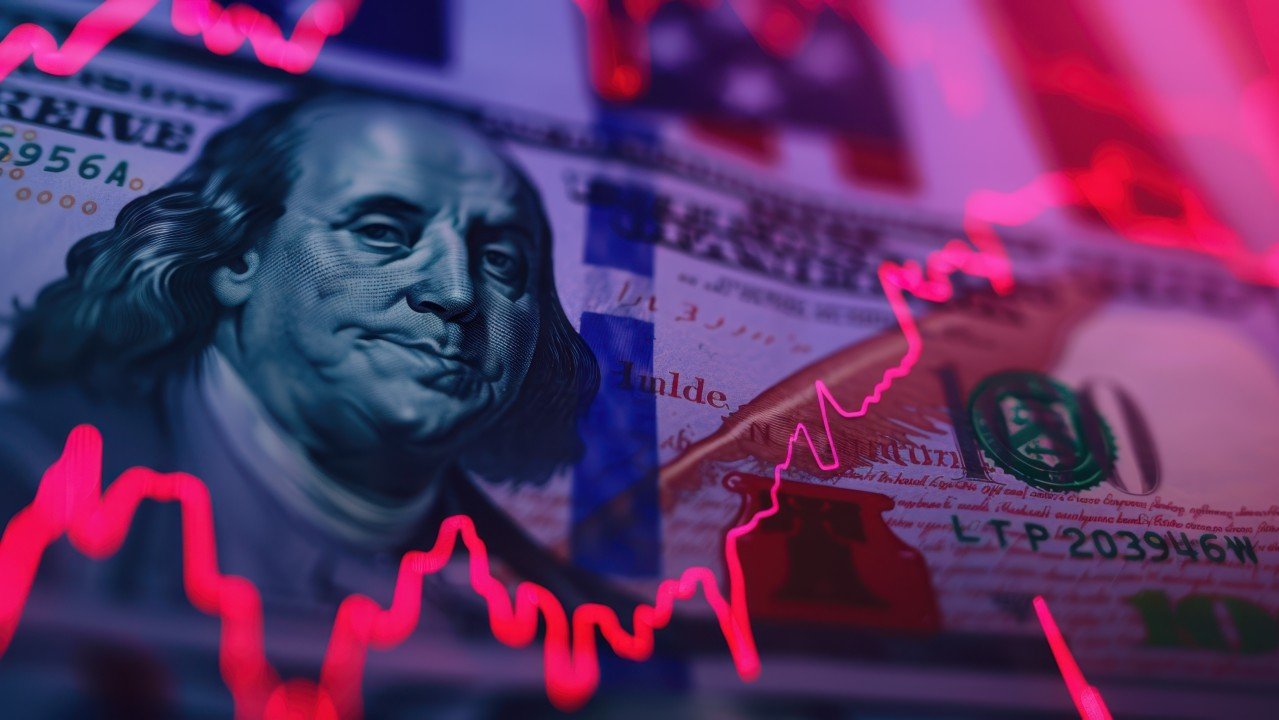
In a shift that is sending ripples across financial markets, institutional investors around the world are pulling back from U.S. equities and reducing exposure to the U.S. dollar, signaling a significant change in sentiment toward American assets. According to the latest Bank of America Global Fund Manager Survey, global investors are now the most underweight on U.S. stocks in more than two decades, with the dollar facing similar skepticism as a long-term safe-haven asset. This transition is being fueled by multiple converging factors, including geopolitical instability, growing U.S. fiscal deficits, trade tensions, and an increasingly favorable investment climate in Europe and select emerging markets. For investors, economists, and policymakers alike, this trend represents a rebalancing of global capital flows that could reshape market dynamics in the months ahead.
Investor Sentiment Toward U.S. Markets Hits Multi-Year Lows
The Bank of America survey, considered a key barometer of global institutional sentiment, reveals that fund managers have turned heavily underweight on U.S. stocks and the dollar, preferring instead to rotate their portfolios into European and Asian equities. The survey showed that 36% of participants are now net underweight U.S. equities—the highest level since 2003. At the same time, positioning on the dollar turned net negative for the first time in over five years, with investors citing mounting fiscal concerns, valuation extremes, and weakening macroeconomic indicators.
The U.S. equity market, especially the tech-heavy NASDAQ, has experienced an extraordinary bull run over the last several years. But now, investors are questioning the sustainability of elevated valuations, particularly as economic growth slows, earnings forecasts are revised downward, and inflation remains persistently above target. Many portfolio managers believe the best returns may no longer be found in U.S. assets alone.
Rising U.S. Debt and Fiscal Deficits Raise Red Flags
A key driver of investor caution is the ballooning U.S. fiscal deficit. The Congressional Budget Office (CBO) projects that the U.S. federal deficit will reach over $1.8 trillion this year, driven by increased government spending, rising interest costs, and lower-than-expected tax revenues. The national debt is now projected to exceed 125% of GDP by 2030, raising serious questions about long-term fiscal sustainability.
Investors fear that soaring U.S. debt levels could lead to a loss of confidence in Treasury securities, pushing yields higher and triggering volatility in global credit markets. This concern is magnified by the growing political polarization in Washington, which has led to repeated debt ceiling standoffs and policy gridlock. As a result, some asset managers are choosing to diversify their bond portfolios with sovereign debt from countries like Germany, Canada, and Australia—nations viewed as having stronger fiscal discipline.
Geopolitical Tensions Erode Dollar Safe-Haven Appeal
The traditional role of the U.S. dollar as a global safe-haven currency is also being called into question. With the U.S. now embroiled in rising geopolitical conflicts, including its military engagement in the Middle East and an escalating trade war with China, the perception of the dollar as a “neutral” or stable currency is beginning to fade. Several countries, particularly in the Global South, have voiced frustration over the dominance of the dollar in international trade, and some have even accelerated efforts to settle trade in alternative currencies such as the euro, yuan, or local currency blocs.
In response, central banks in emerging markets are reducing their U.S. dollar reserves and increasing holdings in gold and non-dollar currencies. This trend, while gradual, is gaining momentum and contributing to the dollar’s underperformance against a basket of global currencies. The U.S. dollar index (DXY) has declined by nearly 6% year-to-date, reflecting both diminished investor confidence and a broader reconfiguration of reserve management strategies.
Attractive Valuations Abroad Drive Capital Outflows
While risks in the U.S. are mounting, attractive investment opportunities abroad are also contributing to the outflow of capital from American markets. European equities, particularly in sectors like green energy, luxury goods, and financial services, are seeing renewed interest thanks to relatively low valuations and improving macroeconomic stability. The recent ECB rate cuts and Eurobond discussions have added to optimism about the region’s fiscal and financial integration.
In Asia, countries like India, Indonesia, and Vietnam are emerging as new hotspots for foreign direct investment and equity inflows. These economies offer robust growth prospects, younger demographics, and increasingly tech-driven industries. Additionally, Japan’s bond market is seeing increased institutional buying, as long-term yields rise in response to the Bank of Japan’s policy changes.
This global diversification strategy is not just about seeking higher returns—it’s also about managing risk. Investors are increasingly looking to balance their portfolios geographically, reducing dependence on any single region and hedging against macroeconomic shocks that may be specific to the U.S.
Currency Hedging and Diversification as Defensive Strategies
In response to the dollar’s volatility, many fund managers are now engaging in currency hedging strategies to protect their portfolios. Currency ETFs, options, and forward contracts are being used to minimize the downside risk of a weakening dollar. At the same time, global investment funds are ramping up their exposure to non-dollar-denominated assets, including eurozone corporate bonds, emerging market debt, and local-currency sovereign issues.
Moreover, ESG and green bond markets in Europe and Asia are attracting capital due to their alignment with global sustainability goals. These instruments not only offer diversification but also align with broader institutional mandates on responsible investing.
Implications for U.S. Markets and Monetary Policy
The capital flight from U.S. assets could have significant implications for American markets. A persistent decline in foreign demand for U.S. Treasuries may force the Federal Reserve to intervene more frequently in the bond market to maintain liquidity and control yields. At the same time, a weaker dollar could contribute to imported inflation, complicating the Fed’s efforts to bring core inflation back within its target range.
On the equities side, if investor outflows persist, U.S. companies may face higher capital costs and declining valuations, particularly in sectors that rely heavily on foreign investment or exports. Domestic pension funds and institutional investors may need to fill the gap left by global investors, which could further alter asset allocation strategies and influence corporate financing decisions.
A New Era of Global Capital Rotation
The growing shift away from U.S. stocks and the dollar signals the beginning of a new era in global investing, one defined by diversification, geopolitical hedging, and currency rebalancing. While the U.S. remains a central player in global finance, the days of unquestioned dominance are beginning to fade, as investors embrace a more nuanced and distributed view of risk and opportunity.
For market participants, staying agile in this environment means tracking global fund flows, monitoring geopolitical developments, and reassessing the traditional U.S.-centric portfolio model. As capital continues to flow into European and Asian markets, the future of global finance is being rewritten—and those who adapt early may find themselves ahead of the curve.
Finance and Economy
France Pushes Eurozone Toward Joint Eurobond Issuance
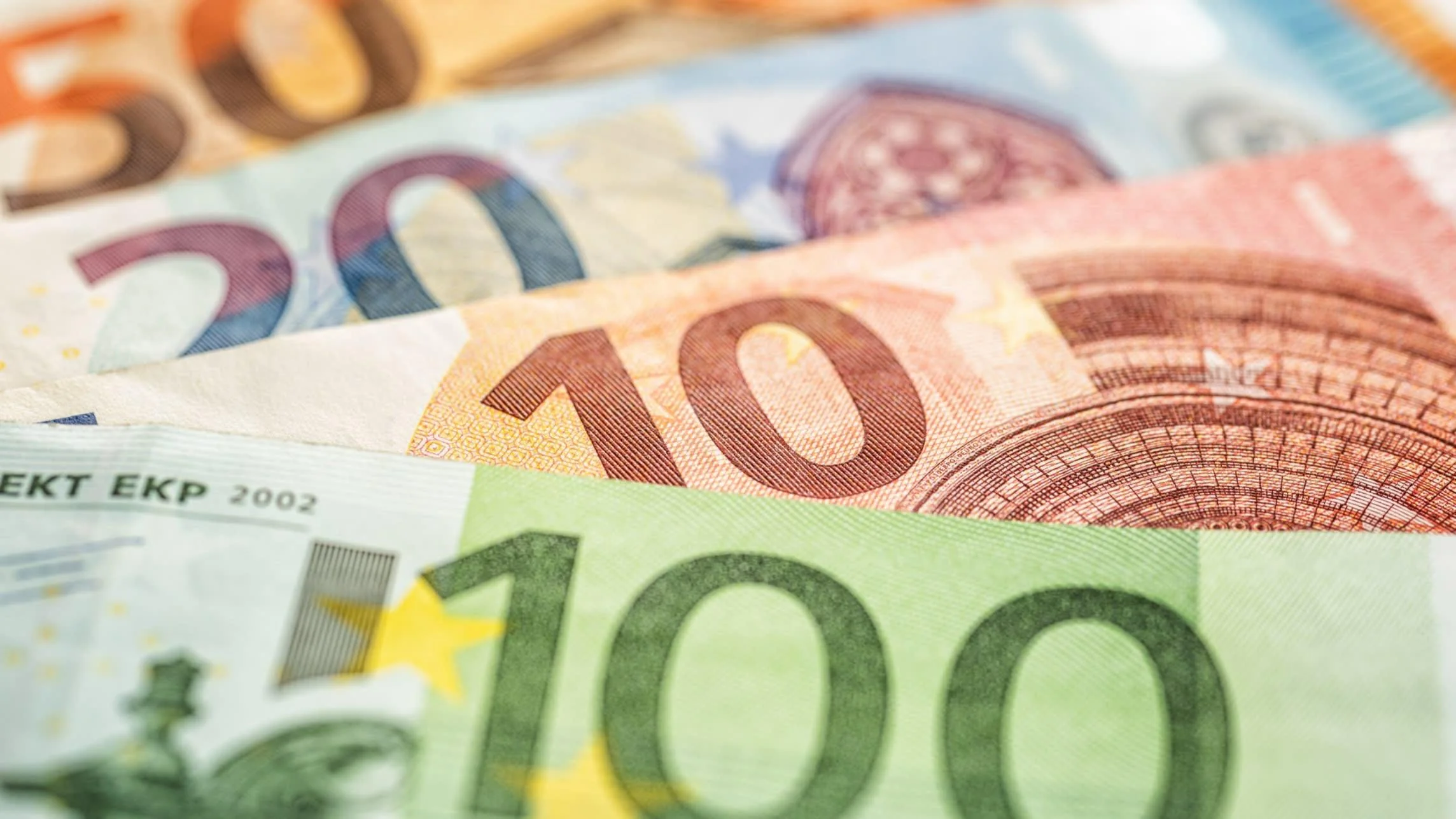
In a bold move that could redefine the financial architecture of the European Union, France has renewed its push for the issuance of joint eurozone debt instruments – commonly referred to as Eurobonds – as a way to strengthen the euro on the global stage. As the EU prepares for its upcoming summit on June 26-27, the proposal is once again stirring heated debate among member nations. French officials argue that a shared debt mechanism is essential not only for financial resilience but also for elevating the euro’s standing as a credible alternative to the U.S. dollar. While the idea garners support from key institutions like the IMF and the ECB, resistance from fiscally conservative member states continues to block consensus. This article explores the implications of France’s proposal, the potential benefits and challenges of Eurobond issuance, and the evolving role of the euro in a multipolar financial world.
France’s Strategic Case for Eurobonds
French President Emmanuel Macron and Finance Minister Bruno Le Maire have long been advocates for deeper EU financial integration. According to them, Eurobonds would represent a tangible step toward fiscal solidarity and monetary cohesion, allowing member nations to borrow at collectively favorable rates while demonstrating political unity. The latest push comes at a time when the European economy is facing several headwinds: slowing growth, fragmented recovery across member states, and heightened global financial volatility triggered by geopolitical conflicts and energy insecurity. Macron has reiterated that a common debt tool is essential for financing major EU-wide projects such as green energy transition, digital infrastructure, and military defense.
From a strategic standpoint, France views Eurobonds as more than just a financial mechanism – they are a symbol of EU credibility and resilience. By pooling risk and aligning borrowing capacity, the eurozone could present a united front in capital markets, reducing the vulnerability of weaker economies and improving the euro’s attractiveness to foreign investors.
The Euro’s Current Global Standing and Its Challenges
Despite being the world’s second most-used currency, the euro still lags far behind the U.S. dollar in terms of global reserve share, trade settlement, and safe-haven preference. Analysts point out that one of the primary reasons for this is the fragmented nature of the eurozone bond market. Each country issues its own sovereign debt, leading to a lack of a single, risk-free eurozone bond benchmark – unlike U.S. Treasuries, which offer deep liquidity and low risk.
France’s proposal seeks to address this imbalance. A unified Eurobond market could create a highly liquid, stable, and scalable financial product that would attract central banks, pension funds, and sovereign wealth investors. Over time, this could shift more global reserves into euros, boosting the currency’s influence in global trade and finance.
Institutional Support: IMF, ECB, and Market Participants
Key international organizations have thrown their weight behind the idea. The International Monetary Fund (IMF) has suggested that Eurobonds could enhance the EU’s fiscal capacity and crisis response agility. Meanwhile, European Central Bank (ECB) officials, including President Christine Lagarde, have hinted that deeper fiscal integration is necessary for the euro to realize its full potential.
Financial market participants have also shown interest. Asset managers argue that Eurobonds could become a cornerstone of fixed-income portfolios, particularly for investors looking to diversify away from dollar-denominated assets. Some analysts compare the opportunity to the creation of the U.S. Treasury market in the post-war era, which laid the groundwork for the dollar’s global dominance.
Opposition from the Frugal Four and Risk-Sharing Concerns
Despite France’s enthusiasm and institutional support, significant opposition persists from fiscally conservative EU nations, notably Germany, Austria, the Netherlands, and Finland—often dubbed the “Frugal Four.” These countries argue that shared debt would penalize responsible fiscal behavior and open the door to moral hazard, where weaker economies might overborrow under the protection of joint guarantees.
German officials have also cited constitutional constraints and public opposition to any perceived “debt mutualization.” Instead, they advocate for reforms at the national level, more stringent budget controls, and the use of existing mechanisms like the European Stability Mechanism (ESM) for crisis funding.
This divide continues to stall formal negotiations. At the heart of the debate is the question of trust and fiscal governance, as many northern states remain skeptical about the long-term commitment of their southern counterparts to austerity and budget discipline.
Implications for Financial Markets and Investors
If approved, Eurobonds would be a game-changer for European capital markets. They would offer a new safe asset class, potentially rivaling U.S. Treasuries in size and reliability over the long term. For the European banking system, Eurobonds could provide high-quality collateral and improve liquidity conditions, especially for cross-border lending.
Investors are closely monitoring the situation. If the EU takes concrete steps toward joint bond issuance, bond yields across peripheral economies like Italy, Spain, and Greece could compress further, as risk premia shrink in anticipation of shared guarantees. Simultaneously, euro-denominated assets may see a surge in foreign inflows, especially from central banks seeking to rebalance reserve portfolios.
Strengthening the Euro’s Role in a Multipolar World
The geopolitical landscape is increasingly defined by multipolarity, with China, Russia, and the U.S. competing for influence in trade, finance, and security. In this context, the eurozone faces a historic opportunity to carve out a more assertive role. Strengthening the euro through fiscal and capital market integration is seen as essential to counterbalance the dollar’s dominance and reduce reliance on U.S.-led financial infrastructure.
Eurobonds could serve as a financial pillar in this transition. As global investors seek alternatives in a fragmented world economy, the euro’s rise as a stable, investable, and liquid currency backed by joint instruments could bolster its credibility and utility.
A Defining Moment for European Unity
France’s push for Eurobonds is more than just a fiscal proposal – it is a call for political and financial unity in a time of global uncertainty. While the road to consensus is steep, the growing support from institutions, investors, and southern EU members suggests that momentum is building. The upcoming EU summit will be a crucial test of the bloc’s ability to move beyond national interests and toward a shared financial future.
If successful, Eurobond issuance could redefine the eurozone’s role in the global economy, offering new tools for crisis response, economic development, and financial competitiveness. For investors and policymakers alike, this moment marks a critical juncture – either Europe seizes the opportunity to lead, or it risks remaining a secondary player in a rapidly evolving financial world.
Finance and Economy
Oil Price Spike as Middle East Conflict Deepens: A Global Market Wake-Up Call
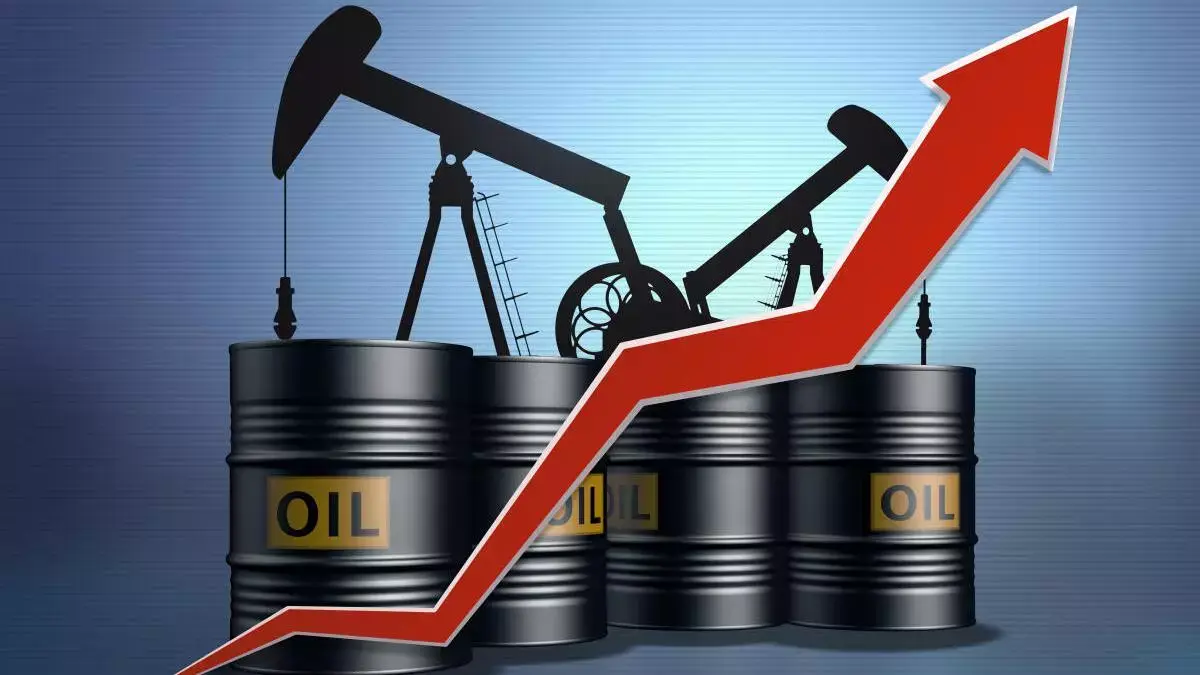
The financial world is once again on high alert as escalating tensions in the Middle East have triggered a sharp surge in global oil prices, sending shockwaves through equity, commodity, and currency markets alike. With the U.S. reportedly striking Iran’s nuclear sites, Brent crude surged over 18%, nearing $80 per barrel in a matter of hours. The sudden volatility reignited fears of a potential $100 oil scenario, reminiscent of past geopolitical flashpoints that deeply impacted global supply chains, inflation expectations, and central bank policy stances. This article delves into the causes, consequences, and global financial implications of this emerging crisis.
The Trigger: U.S. Strikes on Iran’s Nuclear Infrastructure
On June 21, 2025, international news outlets confirmed that U.S. military forces had targeted Iranian nuclear facilities in what they described as a “pre-emptive defensive measure.” While the full extent of the damage is still being assessed, the attack has clearly escalated tensions in an already volatile region. The Middle East, being a vital hub for global oil production and shipping, plays a significant role in maintaining supply stability. Iran, which controls access to the Strait of Hormuz – a key chokepoint through which nearly 20% of the world’s oil supply passes—responded with threats to close the strait and intensify its military posturing. This heightened the risk premium in energy markets virtually overnight.
Oil Prices React Swiftly to Geopolitical Instability
Crude oil, especially Brent and West Texas Intermediate (WTI), reacted with extreme sensitivity to the developments. Brent crude jumped over 18% within a 24-hour period, while WTI saw a comparable surge. Analysts at Goldman Sachs and JPMorgan warned that if the Strait of Hormuz were to be blocked, prices could surpass $100 per barrel within weeks. The last time the oil market saw such an intense geopolitical premium was during the 2019 drone attacks on Saudi oil facilities. However, the current situation has a more severe undertone due to the involvement of nuclear assets and direct military strikes between two powerful adversaries.
Safe Haven Assets Soar as Risk Appetite Declines
As is common in times of geopolitical crisis, investors flocked to safe-haven assets such as gold, the U.S. dollar, and U.S. Treasuries. Gold climbed above $2,400 per ounce, a level not seen in years, while the U.S. dollar index rose nearly 2% as capital fled emerging markets and riskier assets. Meanwhile, 10-year U.S. Treasury yields fell sharply, reflecting a surge in demand for perceived low-risk instruments. Cryptocurrency markets, particularly Bitcoin, experienced a brief rally as some investors viewed digital assets as alternative stores of value, although that rally quickly reversed amid broader market instability.
Stock Markets Face Broad Sell-Off, Led by Energy-Sensitive Sectors
Equity markets around the globe responded negatively. The S&P 500 and NASDAQ both dropped over 2.5% in intraday trading, led by declines in consumer discretionary, industrials, and airline stocks, which are highly sensitive to fuel price increases. European indices such as the FTSE 100 and DAX also saw steep losses, while Asia-Pacific markets like the Nikkei 225 and Hang Seng Index fell sharply as investors priced in a higher global risk premium. Interestingly, energy stocks provided the only bright spot in an otherwise red sea of market activity, with companies like ExxonMobil and Chevron posting strong gains on expectations of rising revenues.
Inflationary Pressures Could Derail Central Bank Strategies
The surge in oil prices couldn’t have come at a worse time for global central banks. After years of battling inflation through aggressive interest rate hikes, many central banks had only just begun to pause or consider rate cuts in 2025. However, higher energy prices feed directly into inflation, particularly in transport, manufacturing, and agriculture sectors, potentially forcing monetary authorities to reverse their dovish pivot. The European Central Bank (ECB), which had recently initiated its first rate cut in years, may now face pressure to hold off on further easing. Similarly, the Federal Reserve, which had opted to maintain its current rate in the last FOMC meeting, is likely to adopt a more hawkish tone moving forward.
Emerging Markets Bear the Brunt of the Crisis
The fallout from spiking oil prices is especially damaging for emerging markets, which are typically more sensitive to commodity price fluctuations. Countries like India, Turkey, and South Africa, which are major oil importers and have significant current account deficits, saw their currencies depreciate against the dollar. This adds to inflationary pressures and increases the cost of dollar-denominated debt, complicating fiscal and monetary policy responses. Foreign institutional investors also withdrew capital from these markets, adding to equity market stress and further depressing sentiment.
Global Economic Growth at Risk
Economists are revising down global GDP forecasts amid fears that higher oil prices will dampen consumer spending, elevate production costs, and destabilize corporate earnings. According to the IMF, a sustained oil price above $90 could reduce global GDP growth by 0.5% annually, with some regions like Southeast Asia and Sub-Saharan Africa experiencing even greater negative impacts. Supply chains, already recovering from post-pandemic disruptions and trade tensions, now face renewed uncertainty due to potential shipping bottlenecks in the Persian Gulf.
Outlook: What Comes Next for Markets and Policymakers?
Going forward, much depends on how the situation in the Middle East evolves. A de-escalation through diplomatic channels, possibly via UN or EU mediation, could stabilize oil prices and soothe market nerves. On the other hand, if Iran follows through on its threat to block the Strait of Hormuz or retaliates militarily, the crisis could escalate into a full-blown regional conflict with severe repercussions for global trade and energy supply. Policymakers worldwide are monitoring the situation closely, and emergency meetings by OPEC and G20 finance ministers are already being planned. The International Energy Agency (IEA) has also signaled its willingness to release strategic petroleum reserves if needed to calm markets.
The Road Ahead is Uncertain but Manageable
In the face of rising geopolitical tensions and economic uncertainty, investors are advised to adopt a cautious, diversified approach. While markets remain volatile and unpredictable, sound investment principles – such as maintaining a balanced portfolio, avoiding over-leveraged positions, and focusing on long-term fundamentals – remain more relevant than ever. The oil price spike triggered by the U.S.-Iran conflict is a potent reminder of how global politics and finance are deeply intertwined, and why staying informed and agile is critical in today’s interconnected world.
-

 Technology and Finance3 months ago
Technology and Finance3 months agoThe Future of Quantum Computing in Financial Modeling and Trading
-
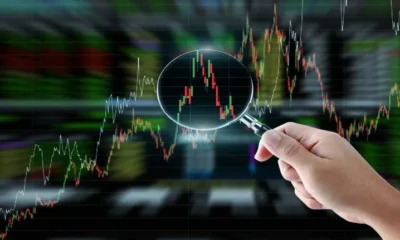
 Finance3 months ago
Finance3 months agoUSA Market Trends & Global Finance Insights
-
Finance3 months ago
Navigating Retirement in the Gig Economy: Challenges and Solutions
-
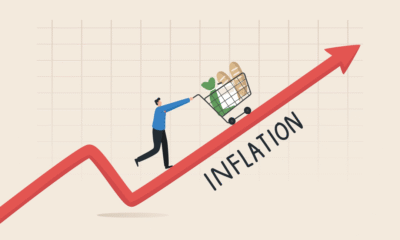
 Finance3 months ago
Finance3 months agoNavigating Personal Finance in the Age of Inflation and High Interest Rates
-

 Finance3 months ago
Finance3 months agoTop 10 High-Yield Savings Accounts in the US (2025 Edition)
-

 Investing & Finance3 months ago
Investing & Finance3 months agoFractional Investing: The Path to Wealth Democratization
-

 Finance3 months ago
Finance3 months agoDecentralized Finance (DeFi): Opportunity or Risk? A Deep Dive into the Rise of DeFi Platforms and Their Challenge to Traditional Finance
-

 Personal Finance2 months ago
Personal Finance2 months agoHow Gen Z is Saving Differently Than Millennials




